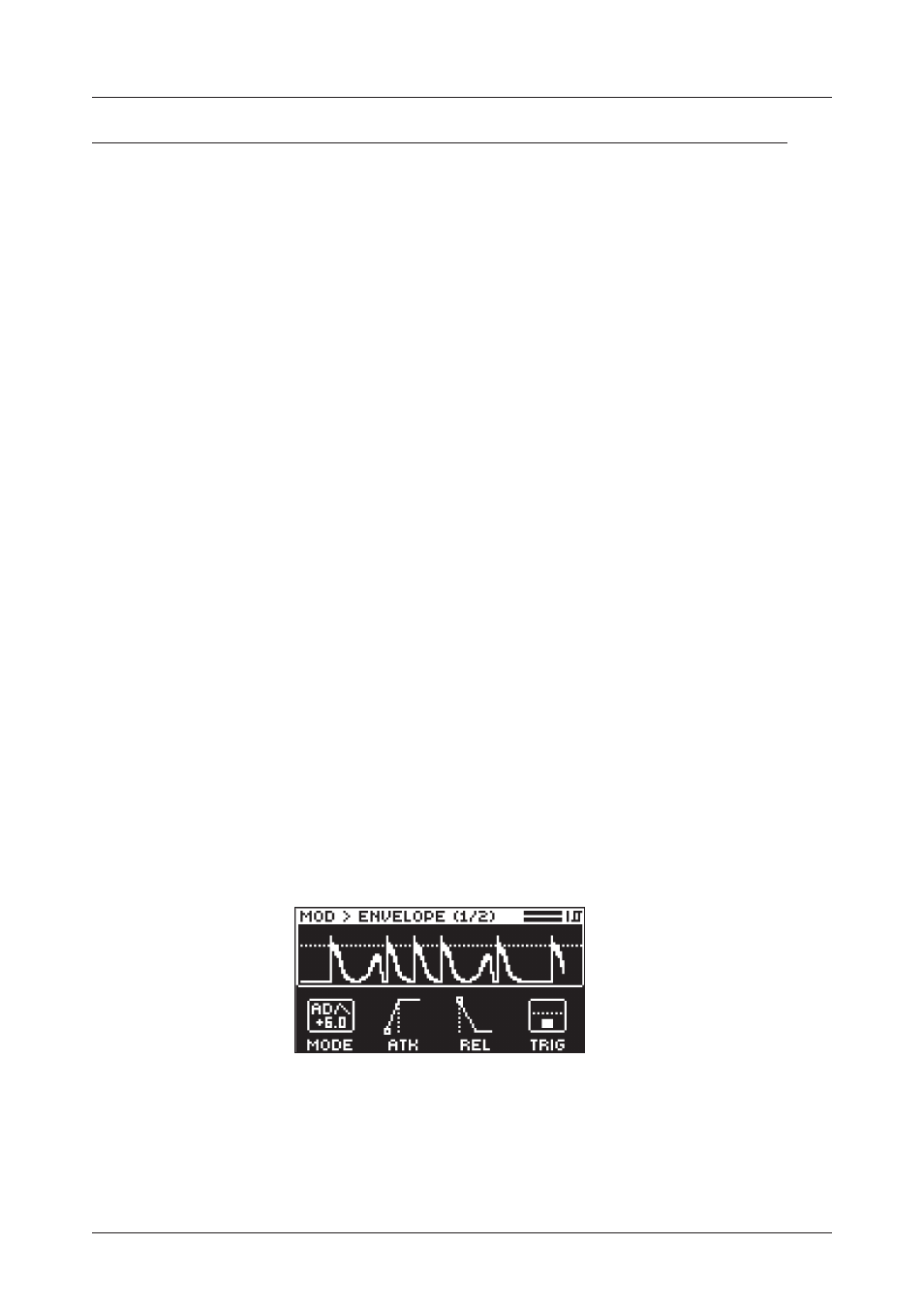Tips & tricks, 1 adding saturation to the high register, 2 analog pseudo-compression – Elektron Analog Heat + FX Hybrid Digital/Analog Sound Processor User Manual
Page 37

8. TIPS & TRICKS
37
8. TIPS & TRICKS
Here you can find a couple of different examples of some of the things you can do with the Analog Heat +FX.
8.1 ADDING SATURATION TO THE HIGH REGISTER
You can use the Analog Heat +FX to add saturation to the high-frequency register of a full range mix. This is
useful when you want to introduce some subtle harmonics to the mix, without distorting the overall sound.
1. Select the
SATURATION
circuit and the
HIGH PASS 2
filter.
2. Connect your sound source to the Analog Heat +FX and make sure that the volume of the sound
source is as strong as possible.
3. Make sure the input level is correctly set. For more information, please see “3.2 SETTING THE INPUT
SENSITIVITY LEVEL” on page 10.
4. Start by setting
DRIVE
to 0,
LEVEL
to 127, and
MIX
to 0. Set the filter
RESONANCE
to 0 and
FRE-
QUENCY
to 100.
5. Increase
DRIVE
until you start to hear a little saturation in the higher registers, but not so much that
the saturation gets too dominant. The processed signal is lower than the bypassed signal, so you
should adjust the preset volume to match the active and bypassed state to be able to A/B test cor-
rectly.
6. Tweak
MIX
and
DRIVE
until you find a nice balance and the sound you want. If you want to use the EQ,
remember that only
HIGH
EQ affects the sound, since the low frequencies are filtered out.
8.2 ANALOG PSEUDO-COMPRESSION
You can use the Analog Heat +FX to emulate a compressor and/or expander by using the Envelope Gener-
ator. This is useful if you want to add some extra pump to drums, or to liven up a flat sound. In this example,
you should use a highly dynamic sound source, with sharp transients, such as drums.
1. Select the
CLEAN BOOST
circuit and disable the filter by pressing both
[FILTER TYPE]
keys at the
same time. All filter type LEDs should be turned off.
2. Connect your sound source to the Analog Heat +FX and make sure that the volume of the sound
source is as strong as possible.
3. Make sure the input level is correctly set. For more information, please see “3.2 SETTING THE INPUT
SENSITIVITY LEVEL” on page 10.
4. Start by setting
DRIVE
to 0,
LEVEL
to 127, and
MIX
to 127.
5. Press the
[HEAT]
key, navigate to the AMP page, and set
VOL
to 127.
6. Press the
[MOD]
key, navigate to ENVELOPE page 1, and set
MODE
to AD. Adjust the
MODE
(AD)
parameter until you clearly see the incoming signal in the
TRIG
meter. You should see the peaks and
dips of the incoming signal, retaining as much as possible of dynamics of the signal.
7. Lower the
TRIG
value until you see the trigger icon blink in the upper right corner of the screen. Make
sure it triggers mainly from the strongest peaks of the incoming sound.
8. Set
ATK
to 48, and
REL
to 72.
9. Press the
[MOD]
key, navigate to ENVELOPE page 2 and change
DEST1
to PST VOLUME and
DEPTH1
to -72.
You should now hear a very dynamic ducking effect with pretty sharp transients. You can change
VOL
,
ATK
,
REL
, and
DEPTH1
to achieve different compression effects.
If you change
VOL
to 80 and apply positive modulation (
DEPTH1
), you expand the signal instead of
compress it.